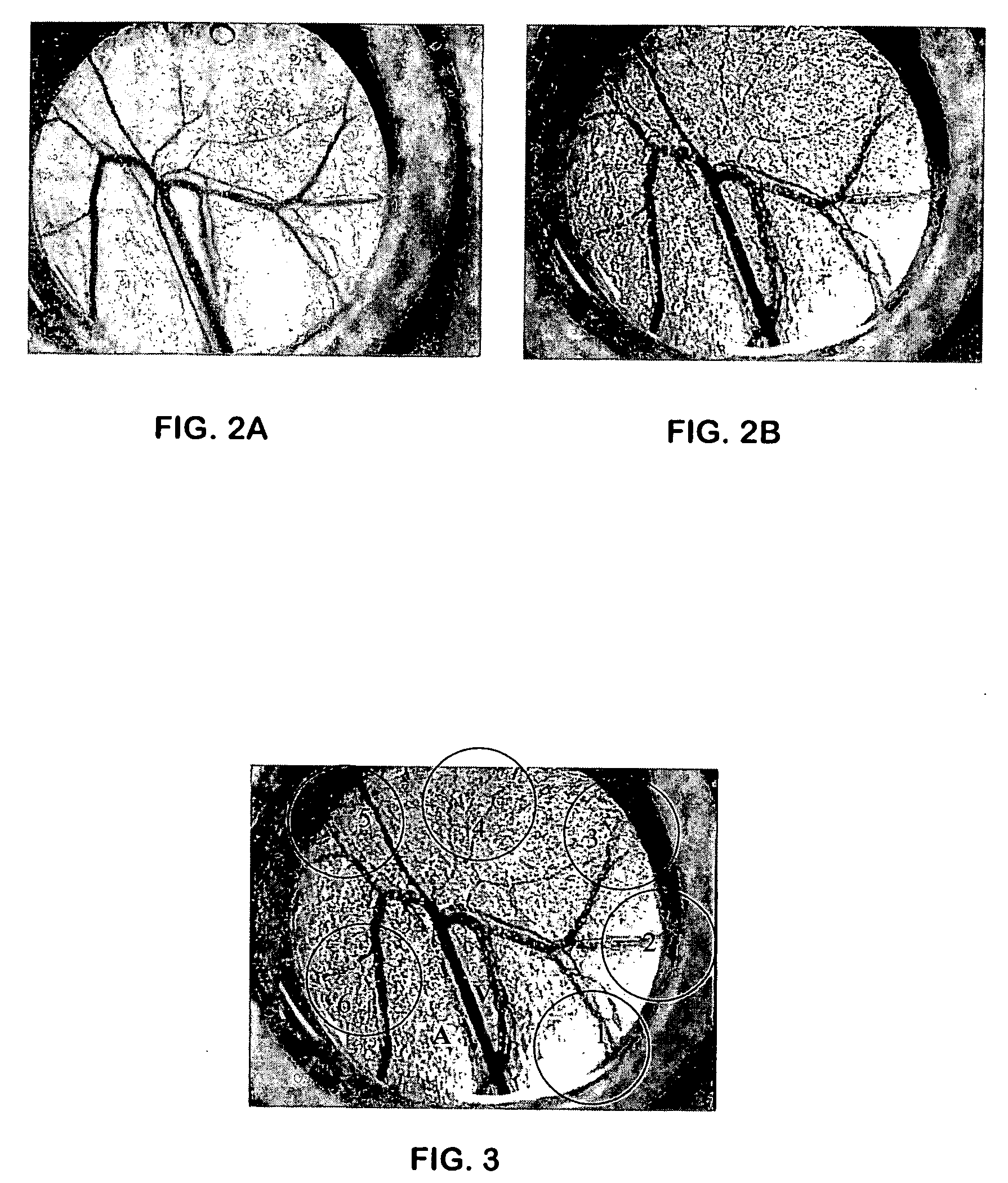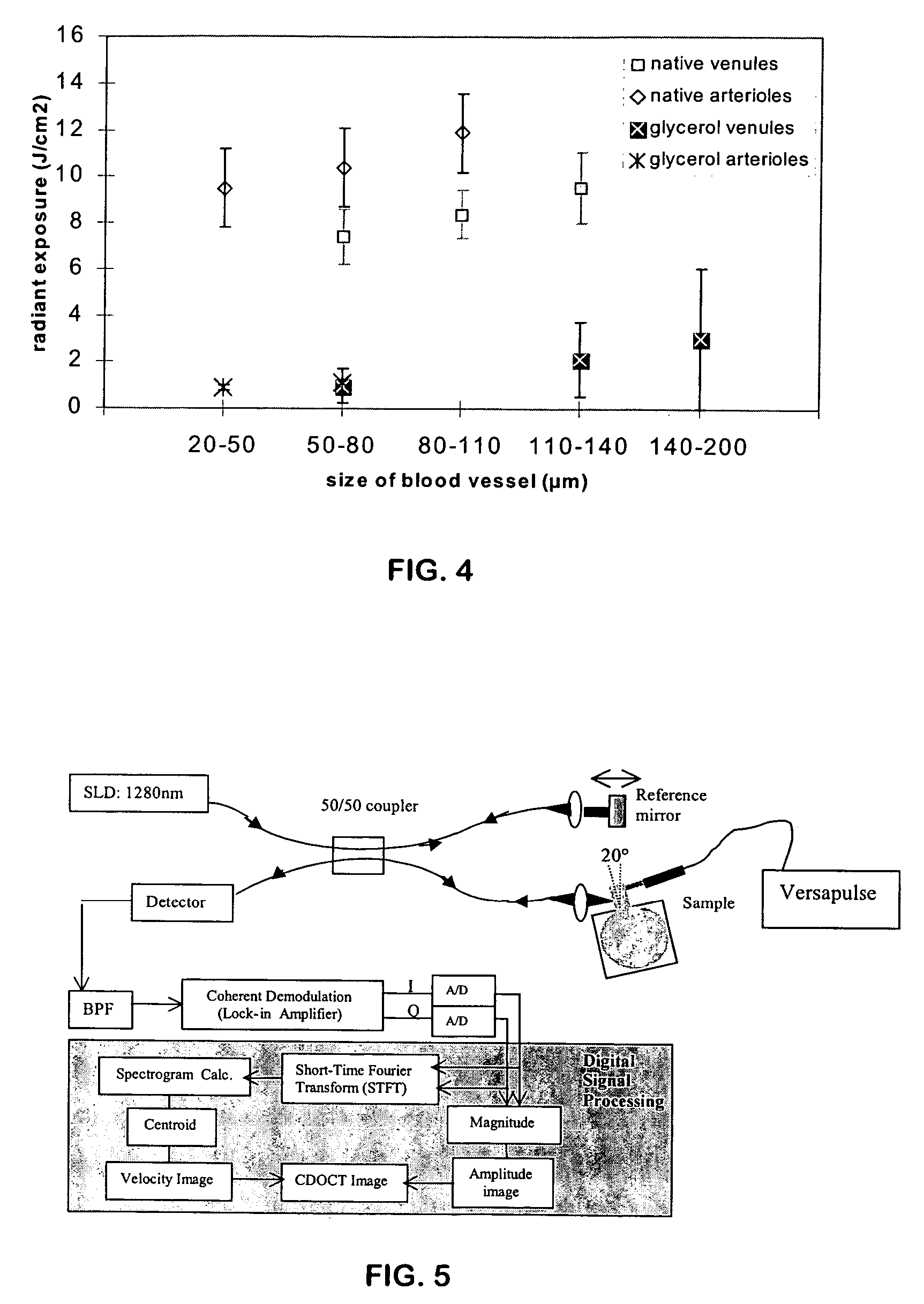Laser treatment of cutaneous vascular lesions
a technology for cutaneous vascular lesions and laser treatment, which is applied in the field of clinical laser treatment of cutaneous vascular lesions, can solve the problems of blood vessels being damaged, affecting normal functions, and serious psychological and social problems, and achieves the effects of vastly improving laser treatment, increasing light penetration, and increasing light transmission
- Summary
- Abstract
- Description
- Claims
- Application Information
AI Technical Summary
Benefits of technology
Problems solved by technology
Method used
Image
Examples
examples
[0056] In these examples, the inventors use chemical agents for reducing the applied laser radiant exposure required to permanently destroy blood vessels. The technique has been demonstrated both in direct blood vessel irradiations, and also on blood vessels located hundreds of microns beneath the epidermal surface of in vivo skin. Evidence is presented that demonstrates the treatment of skin with agents such as glycerol prior to laser radiation leads to a significant decrease in the delivered radiant exposures required to permanently destroy a blood vessel, compared to control cases where treatment with agents such as glycerol did not occur.
Materials and Methods
[0057] Animal Model
[0058] Hamsters were anesthetized with a 4:3 mixture of Ketamine (20 mg / ml): Rompun (100 mg / ml) and 0.15 ml / 100 g body weight of the solution was delivered IP. The rodent dorsal skin flap window preparation first developed by Papenfuss et al. was used as an in vivo animal model to demonstrate the effec...
PUM
| Property | Measurement | Unit |
|---|---|---|
| diameter | aaaaa | aaaaa |
| wavelength range | aaaaa | aaaaa |
| diameter | aaaaa | aaaaa |
Abstract
Description
Claims
Application Information
 Login to View More
Login to View More - R&D
- Intellectual Property
- Life Sciences
- Materials
- Tech Scout
- Unparalleled Data Quality
- Higher Quality Content
- 60% Fewer Hallucinations
Browse by: Latest US Patents, China's latest patents, Technical Efficacy Thesaurus, Application Domain, Technology Topic, Popular Technical Reports.
© 2025 PatSnap. All rights reserved.Legal|Privacy policy|Modern Slavery Act Transparency Statement|Sitemap|About US| Contact US: help@patsnap.com



